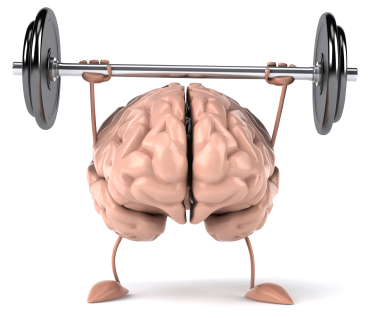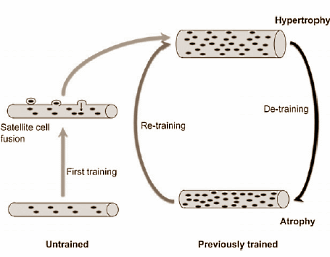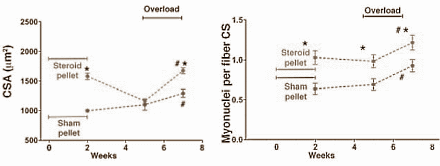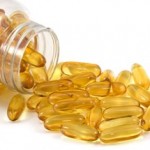By Admin – Steroidal.com
It has long been speculated that muscle memory occurs after a break from resistance training or a period of being sedentary, and then resuming again. The bodybuilder or athlete can regain the muscle mass they had before the break quicker, than not having the muscle mass to start with and needing to build it through hypertrophy. Whether using anabolic steroids helps this phenomenon has not really been studied in humans, but a recent study shed some light done on animals.
Researchers in Norway, at the University of Oslo, tested to see if Testosterone Propionate administration on muscle mass accrual is permanent. The Norwegians first published a study in 2010 stating how ‘muscle memory’ works which is shown here. The figure below shows the mechanism of action.
Until recently is was no understood how ‘muscle memory’ occurs, until researchers postulated the most important and dynamic cells in the human body would be responsible, or part of the puzzle – stem cells. More information on stem cells can be found here.
When muscle fibres are trained they absorb stem cells. These stem cells then grow into adult muscle cells in the muscles. The amount of muscle cells in the muscle fibres will determine the size, strength and power of the particular muscle in general. When you stop training due to injury, age, lifestyle changes or anything else, the new muscle cells remain in the muscle fibres and lose size and shrink, not vanish. This then helps explain why ‘muscle memory’ occurs after hypertrophy.
The Norwegians in the 2010 study concluded that strength athletes could continue to obtain benefits from their muscle strength into their latter years. Moreover, the researchers suspect that anabolic steroids users continue to derive benefit from the cycles they’ve taken for years after stopping.
“”Anabolic steroid have been shown to increase the number of nuclei”, the Norwegian researchers write. “Thus, the benefits of using steroids might be permanent and should have consequences for the exclusion time after a doping offense.”
In there recent animal study on mice given Testosterone Propionate pellets, soon to be published in the Journal of Physiology, the number of muscle cells was recorded in muscle fibres compared to a control group. The Testosterone Propionate pellets raised the levels of Testosterone in the mice for a period of two weeks whilst the control group were given a pellet containing no active substance.
The researchers found that mice given the Testosterone Propionate pellet had muscle cells in the muscle fibres [Myonuclei] had increased by 66 percent. Their muscle fibres also became 77 percent thicker.
Fourteen days later the researchers stopped giving the mice Testosterone Propionate. The dimensions of the muscle fibres decreased, whilst the muscle cells inside the muscle fibres remained the same.
Three months followed and the researchers forced the mice to exercise their muscle for a period of six days. The muscle of the mice that had received the Testosterone Propionate pellets some fourteen weeks earlier then grew faster than those in the control group.
“Our data demonstrate that in least in mice, an episode of testosterone use may recruit a long lasting pool of excess myonuclei, and a persistent increased ability to regain muscle mass by resistance exercise in the absence of further steroid exposure”, the Norwegian researchers write. “Thus, the benefits of even episodic drug abuse might be long lasting if not permanent in athletes. Our data suggests that World Anti-Doping Code calling for only two years of ineligibility after a conviction for steroid use, should be reconsidered.”
Source:
J Physiol. 2013 Oct 28.









